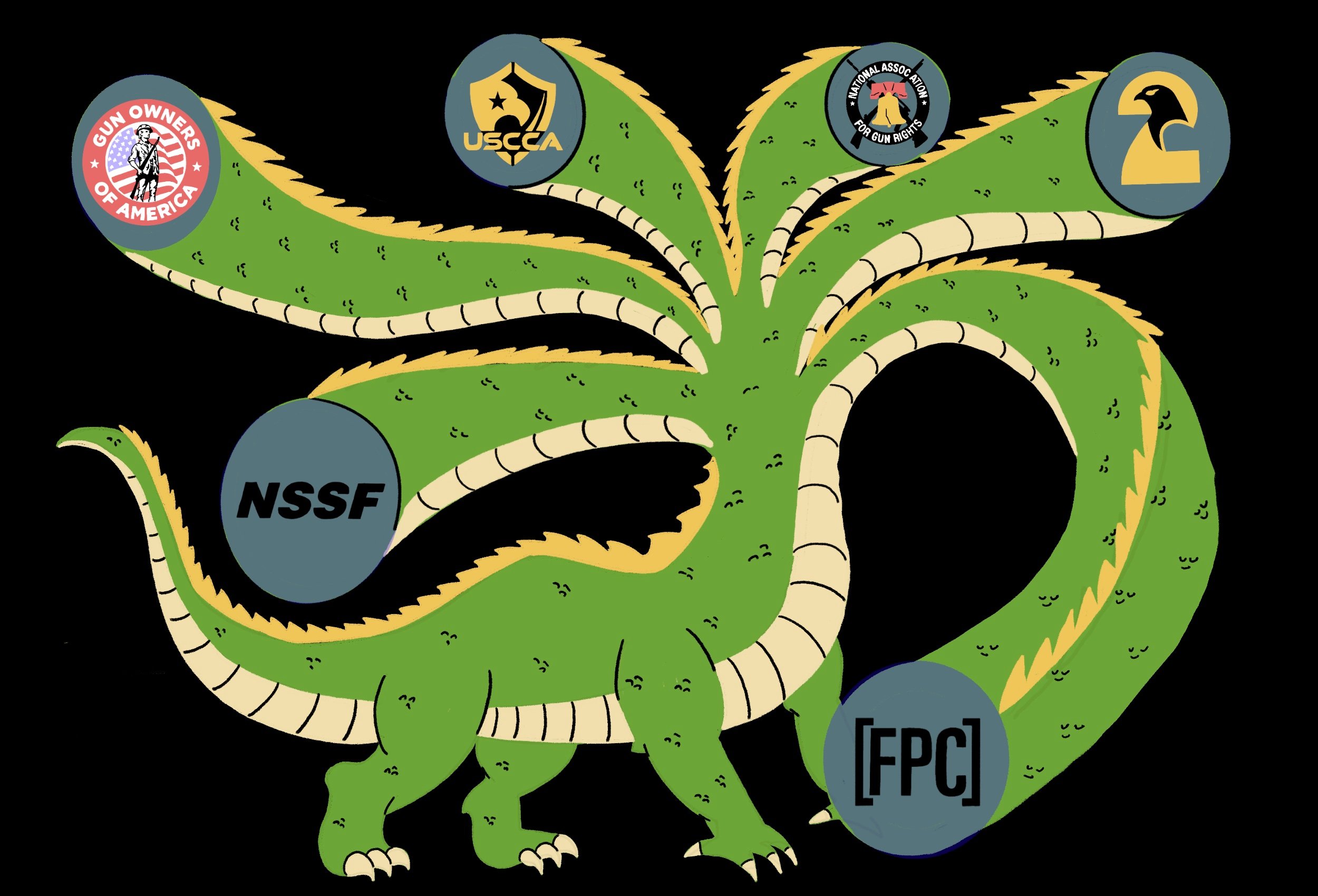The National Rifle Association has become an increasingly aggressive spender in federal elections over the past decade. The group has poured more than $100 million into contests, helping to swing key races and bolster a powerful contingent of gun-rights supporters in Congress. In 2016 alone, the NRA’s election spending topped $50 million — its biggest outlay ever.
The NRA Campaign Spending Tracker, a new tool from The Trace, makes it easy for the public to follow the group’s federal campaign spending as it happens. Every day, our code will pull and sort the NRA’s latest filings to the Federal Election Commission, maintaining a running tally of every dollar that the group has spent on each congressional candidate it’s backing in the 2018 elections, and how much it is spending to oppose those it wants to see defeated.
The NRA’s spending on midterm elections tripled between 2010 and 2014, while taking on an increasingly partisan bent. Gone are the days when the group extended its largesse to sympathetic Democrats. Now, says Robert Maguire, who tracks spending by political nonprofits at the Center for Responsive Politics, “they’re spending in races that will benefit Republicans, in terms of either gaining them control of one house of Congress or maintaining it.”
Currently, the Cook Political Report rates eight Senate races and 26 House races as toss-ups. With the NRA aiming to keep seats under Republican control, its biggest expenditures will likely occur in those contests. In 2016, the group poured more than $6 million into a competitive Senate race in North Carolina, the bulk of it aimed at defeating Democrat Deborah Ross. Investments in House races tend to be smaller, but can still run into the seven figures: In 2014, the NRA spent $1.1 million in an unsuccessful bid to seat Stewart Mills as a representative for Minnesota’s 8th District.
The NRA’s campaign spending takes two primary forms, both of which our tracker will monitor. The group’s Political Victory Fund PAC makes direct contributions to candidates’ campaign committees, but these payments are capped at $5,000 per election. The real muscle comes from independent expenditures, unlimited sums that the NRA spends to boost its prefered politicians, typically by paying for advertising, phone banks, or other forms of publicity. Independent expenditures can also be used to run attack ads, in which case they’re catalogued with the Federal Election Commission according to the candidate they oppose.
The data in our tracker covers the current two-year election cycle, so right now the numbers are dominated by last year’s special elections. In the summer of 2017, the NRA spent more than a million dollars backing Republican Luther Strange in the contest for an Alabama Senate seat. The group spent another $32,000 opposing Strange’s primary opponent, Roy Moore. When Strange lost to Moore, the NRA dropped $55,000 trying to defeat Democrat Doug Jones, who went on to win the election. The group fared better in House contests in Montana and Georgia, where NRA-backed candidates Greg Gianforte and Karen Handel won both seats.
Data from previous cycles shows that the NRA’s general election spending typically begins in earnest after Labor Day. As its expenditures ramp up, the tracker can clue you into the stories beneath the raw numbers. You can look up your state or congressional district — the NRA has already contributed to about 200 candidates, including 27 in Texas and 10 in Pennsylvania. Or investigate the handful of Democratic candidates to whom the group has given its blessing. At The Trace, we’ll be keeping a close eye on all payments to Starboard Strategic, the NRA’s vendor of choice, to see whether that unusual relationship continues amid recent scrutiny.
To help you keep up with the latest NRA spending captured in our interactive database, we’ve also created a Twitter bot that will share every new expense we log. Give it a follow.
Have a comment or want to report a bug? Drop a note to [email protected].

